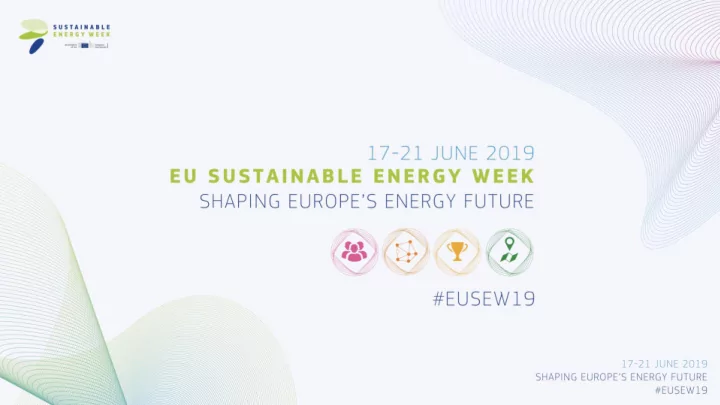

Assessing the effectiveness of policies using experiments by CHEETAH project (CHanging Energy Efficiency Technology Adoption in Households ) Andreas Müller, Technische Universität Wien – Energy Economics Group CHEETAH help us understanding why and how households make energy efficiency investments. The project provides empirical evidence of consumer decision-making linked to energy modelling and policy.
CHEETAH Methodological approach Pre-Analysis Micro level – Survey Household survey in 8 EU member states (online, ~2000 participants per country, representative samples) - Micro-econometric analysis. Meso level: Models for residential buildings (Invert/EE-Lab), appliances (FORECAST) and agent-based (EMLab-Consumer) Analyse the effects of energy efficiency policies and household energy efficiency investments on residential energy demand for all EU member states until 2030. Macro level: Translation of results from energy modelling into input to macroeconomic modelling
CHEETAH The core of our empirical research: Large representative household surveys 75% of EU France Germany energy consumption Poland Italy 76% of EU population Spain Romania UK Sweden CHEETAH survey • Sample of 18,000 households • Main focus on policy items and hypothetical adoption in choice experiments • data on socio-demographics, housing, environmental attitudes and technology-specific items
CHEETAH Meso level: Modelling structure Survey Empirical basis for decision making process; how this is influenced by policies Appliances: Heating: INVERT/EE-Lab FORECAST EMLab-Consumer FORECAST & Invert/EE-Lab & (Buildings) (Appliances) Modelling ABM EMLab-Consumer EMLab-Consumer ,
CHEETAH Outline Selected results • Possible range of saving due to thermostats • Impact of settings of policy framework Summary of findings
CHEETAH I) Thermostats • The survey doesn’t deliver values for the savings [%] per building due to thermostats. Assumption: Savings rate S max up to 10% (depending on building) (with sensitivity for 0% and 20%) • We don’t get the information on how often households think about whether or not to install such a device. Assumption: 10% of households (without thermostats) look into whether or not to install thermostats (with a sensitivity of 5%)
CHEETAH I) Thermostats Energy consumption for space heating and domestic hot water preparation, EU-28, 2030 impact of smart thermostat technology 3000 7% 7% 7% 7% 5% 5% 7% 2500 Final energy demand (TWh) 5% 5% 8% 5% 13% 13% 5% 13% 13% 13% 13% 2000 17% 17% 17% 18% 18% 18% 1500 11% 11% 11% 11% 11% 3% 3% 11% 3% 3% 3% 3% 1000 16% 16% 16% 16% 16% 16% 500 27% 27% 27% 27% 27% 27% 0 cheetah_smart_thermos_0_10 cheetah_smart_thermos_0_20 cheetah_smart_thermos_10_10 cheetah_smart_thermos_10_20 cheetah_smart_thermos_20_10 cheetah_smart_thermos_20_20 10% 5% 10% 5% 10% 5% Annual share considering to install 0% 0% 10% 10% 20% 20% Upper limit of energy savings: Smax 2030 gas fuel oil coal District heating Electricity biomass ambient heat solar thermal • In a base scenario, thermostats could the final energy demand by 3 – 5% (up to 10 % with Smax=20%) in 2030 • Significant, but way less than effect of refurbishment which reduces demand by 25-30% in the same scenario
CHEETAH II) Heating systems 4000 High trust in subsidy-issuing system Low trust in subsidy-issuing system 0% 2% Default settings for Only subsidies for Subsidies for low Default settings for Only subsidies for Subsidies for low 3500 12% subsidies, equal low income income households: subsidies, equal low income income households: Final energy demand (TWh) subsidies for all households (using 150% of default subsidies for all households (using 150% of default households default subsidy level) value, 50% for other households default subsidy level) value, 50% for other 3000 households households 11% 5% 5% 5% 6% 6% 6% 4% 4% 4% 10% 5% 6% 6% 2500 14% 14% 14% 4% 13% 13% 13% 2000 15% 15% 15% 15% 17% 17% 17% 11% 11% 11% 1500 11% 11% 3% 11% 3% 3% 3% 3% 3% 17% 16% 17% 16% 1000 16% 16% 45% 500 33% 32% 32% 29% 28% 28% 0 Scenario H9 Scenario H9 Scenario H11 Scenario H12 Scenario H10 Scenario H13 Scenario H14 2012 2030 gas fuel oil coal District heating Electricity biomass ambient heat solar thermal • Impact of framework settings in subsidy-issuing system and differentiated subsidy levels for different income groups on the European energy consumption for space heating and domestic hot water preparation
CHEETAH Summary of important findings • Thermostats: We see an impact, but not overwhelmingly high. The effects on overall energy consumption of increased penetration rate of thermostats is diminishing. Once mostly buildings with a low energy demand install thermostats, the impact of additional penetration is modest. • Heating systems: Institutional settings of support mechanism is important. The two framed and tested rebate schemes in the survey lead to a difference in final energy consumption of 3% in 2030.
CHEETAH Contact Andreas Müller, Energy Economics Group TU Wien, Austria www.briskee-cheetah.eu mueller@eeg.tuwien.ac.at
Recommend
More recommend